- Home
- Best Pet for Me List
- Snakes
Snakes
Corn/Garter/Gopher/Hognose/King/Milk/Rat
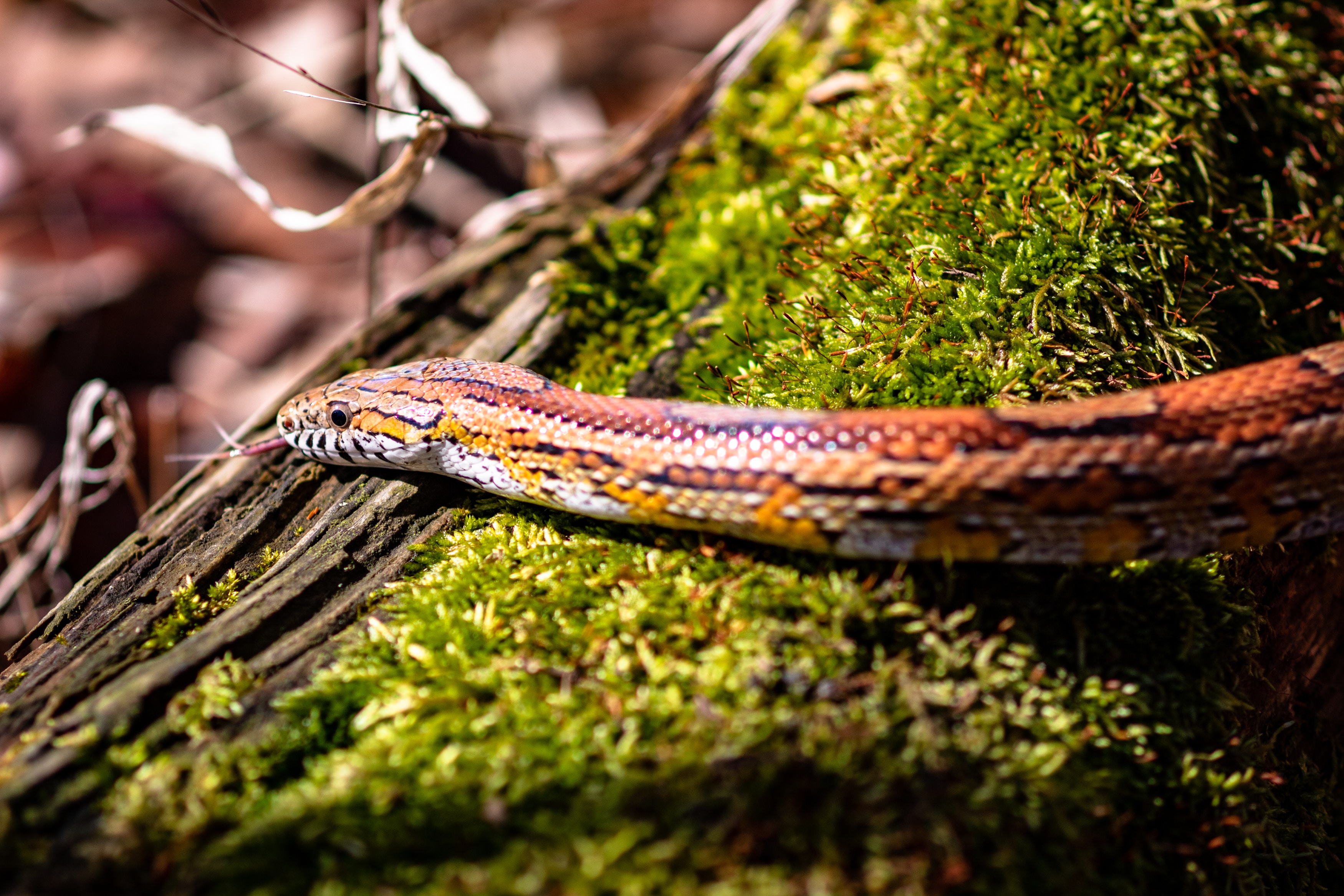 Photo by Joshua J. Cotten https://unsplash.com/photos/close-up-of-brown-snake-n5Ac0gl4xlw
Photo by Joshua J. Cotten https://unsplash.com/photos/close-up-of-brown-snake-n5Ac0gl4xlwI’m grouping these 6 snakes that are on the small side together. They are all popular pets and have similar needs. Some snakes are labeled as nocturnal - being awake and active at night, diurnal - being awake during the day, or crepuscular - being most active at dusk or dawn. But they are actually pretty adaptable and you can create heat and light conditions to encourage them to be active at times that you prefer.
They like cages they can explore in and most snakes need a warm side to their cage and a cooler side, with a very warm rock they can bask on. The rock should be heated by a heat lamp, it should not be an electrically heated rock because heated rocks could burn your snake. You should have thermometers in the warm part as well as the cool part of the cage, as well as a humidity monitor. Having a lot of plants and objects in the habitat may make it more interesting for your snake to explore and for you to look at, but it also means a more complicated cleaning routine.
Nonchlorinated water is best for snakes to drink and to bathe in.
Snakes shed their skin periodically. Their behavior will change somewhat during the shedding time, and they may stop eating for a while.
Blister disease is a disease that snakes can get. It happens if the habitat is too damp. It is an infection underneath the snake’s scales and can be fatal. It is easily treated with antibiotics.
Dangerous?
None of these snakes are dangerous and they are usually ok with being handled. While some are venomous, they rarely bite and they don’t have enough venom to hurt a human.
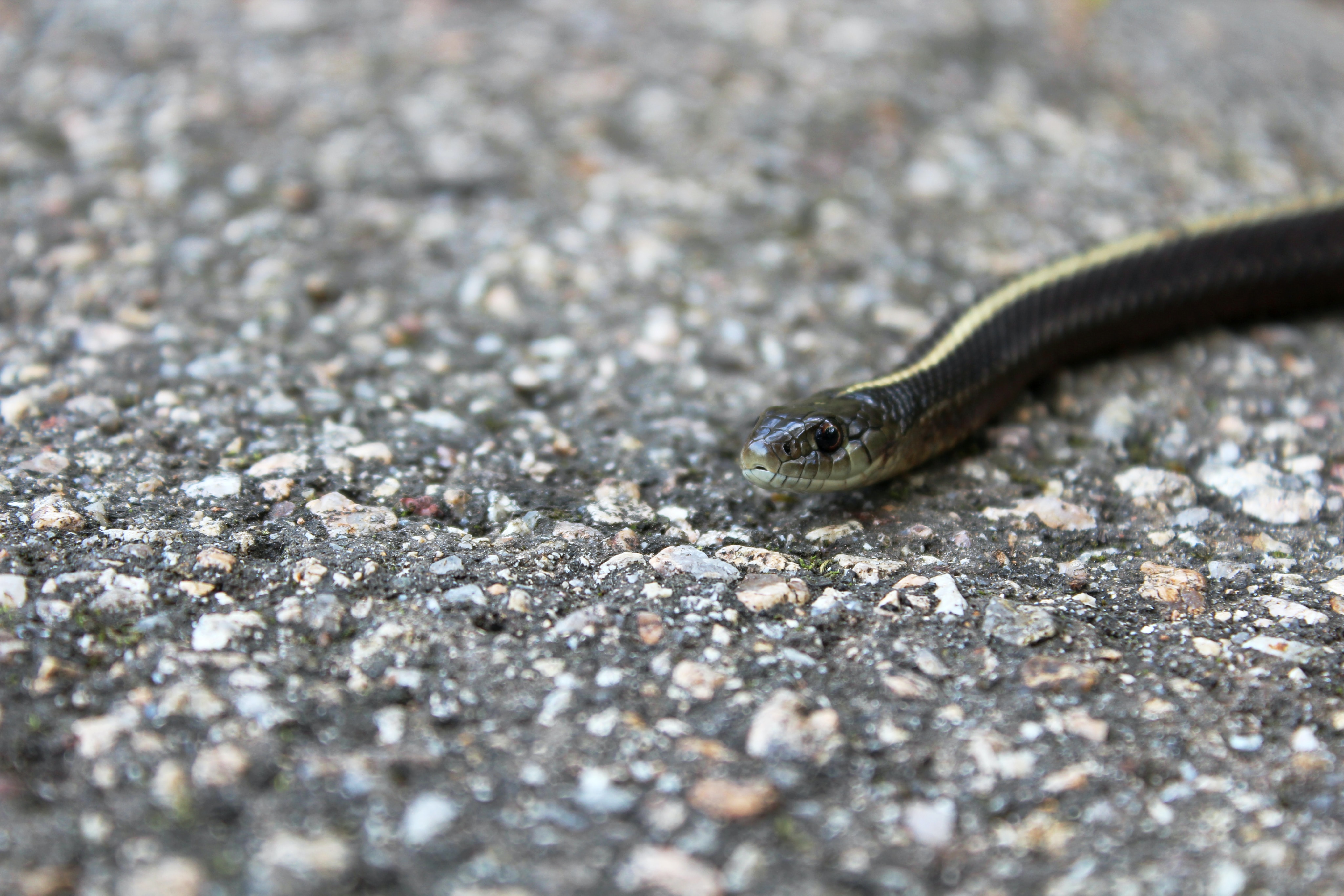 Photo by Kelsey Weinkauf https://unsplash.com/photos/a-black-and-brown-snake-laying-on-the-ground-aJk29rx5MSo
Photo by Kelsey Weinkauf https://unsplash.com/photos/a-black-and-brown-snake-laying-on-the-ground-aJk29rx5MSoLike People?
Corn
Docile, even temperament, and will do well with regular handling. When they feel threatened, they may vibrate their tails like rattlesnakes do but they rarely bite. Corn snakes do not grow big, are not very active, and don’t eat live prey so they are great pets for children.
Garter
Yes, they are very calm and not likely to bite. They do have venom, but if they do bite it should only cause minor local discomfort. They tend to be slippery and wiggly when held. They eat more often than other snakes, so they poop more often and it smells worse than other snake poop.
Some garter snakes have mild venom. They will emit a bad smell when they are frightened.
Gopher
For the most part, Gopher Snakes are fine with being held. They will hiss very loudly if they are upset or threatened. They will also rattle their tail against the ground and change the shape of their heat to look more like a rattlesnake. They will also make themselves smell really bad if they don’t like being held.
They rarely bite. With repeated handling, they learn to relax.
Hognose
These snakes can learn to be handled. Their response to fear is to play dead or try to look like a dangerous snake by flattening their necks and raising their heads. They rarely bite.
King
They are calm snakes that are constrictors, so they don’t have any venom. They get used to handling easily.
Milk
Milk snakes are not venomous. They look a little like coral snakes, which are venomous. Milk snakes have red bands that are surrounded by black bands. Coral snakes have red bands surrounded by yellow bands, so if you know that it is easy to tell the harmless mild snake from the poisonous coral snake.
Rat
They are not venomous and are easily trainable to tolerate handling and they don’t tend to bite. If they are stressed they will rattle their tails and make a foul smell.
Sleep
Corn
Sleep at night. But they are adaptable. In the wild, they are more active at night during the summer when it is too hot during the day.
Garter
Garter snakes will be awake and active both day and night.
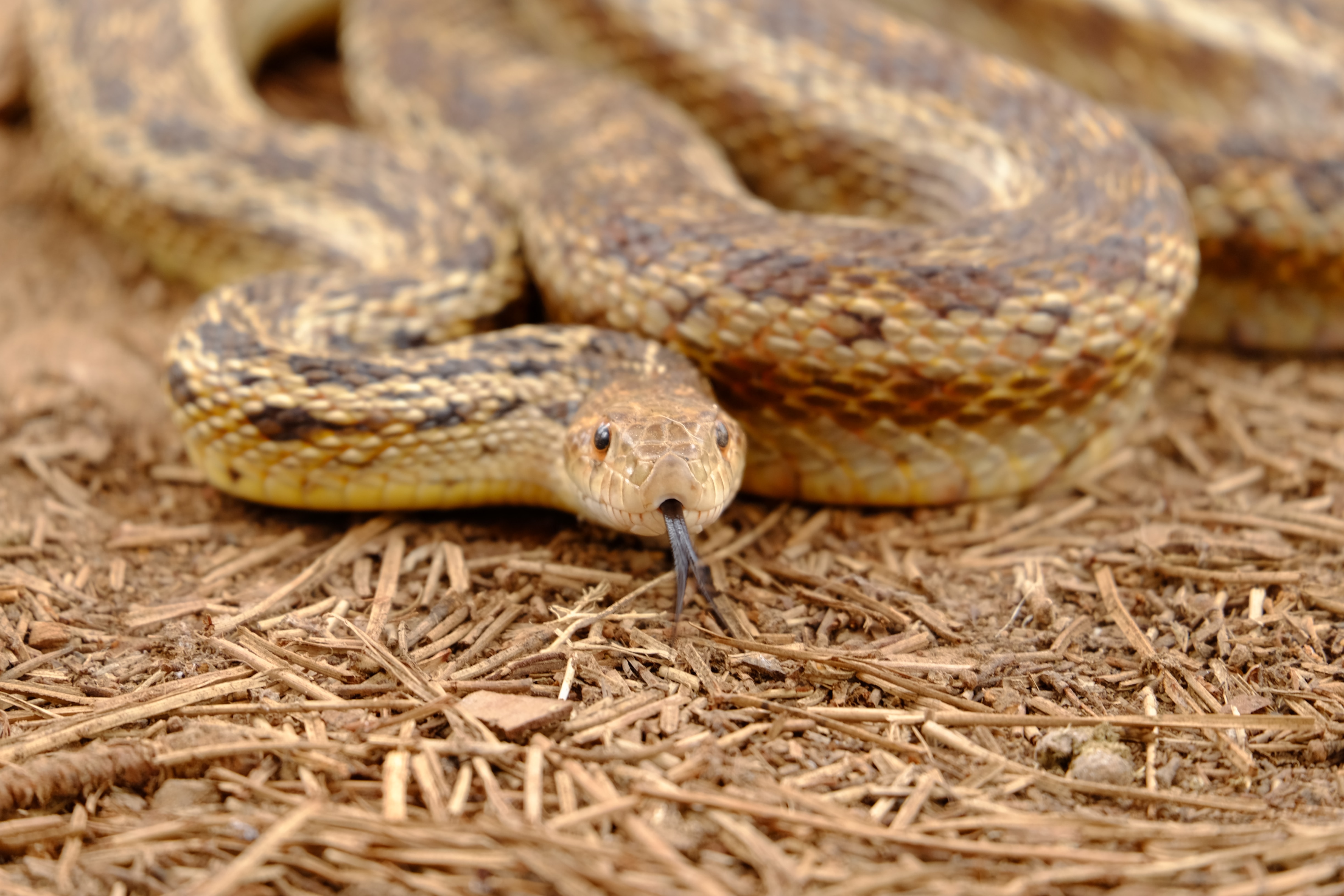 Photo by Yuval Levy https://unsplash.com/photos/brown-snake-qqtkTXgYOvY
Photo by Yuval Levy https://unsplash.com/photos/brown-snake-qqtkTXgYOvYGopher
They tend to be most active during the day and they enjoy exploring their habitat.
Hognose
They are diurnal. They are awake during the day.
King
They are usually active during the day.
Milk
They are nocturnal during the summer and diurnal in the spring and autumn.
Rat
They are active during the day.
Size
Corn
4-6 feet and weight between 1-3 pounds
Garter
Between 18 - 26 inches. Garter snakes are on the small side of snakes. This makes them good first pets for kids, as long as an adult is around to supervise and help out.
Gopher
They are often 4-5 feet long with males being a little larger than females.
Hognose
2-3 feet
King
2-6 feet long. There are many different types of king snakes and some are larger than others.
Milk
2-4 feet
Rat
3-6 feet long
Temperature and Humidity
Corn
Around 85 degrees F for the warm part of the cage, slightly higher for a longing or basking rock, and 75 in the cool part of the cage. Use a heat lamp or heat mat under the cage. Humidity should be 46-60% and increase to 70% during shedding.
Garter
Most of the cage should be about 70 degrees F, with a warm spot of up to 90 degrees.
Gopher
A hot basking area should be about 85 degrees F and the cooler part can be not less than 75 degrees. They like the humidity to be below 60%.
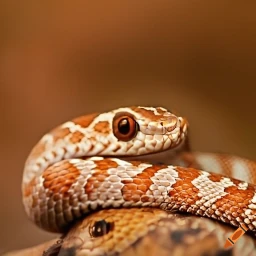 Created by Linda Velwest with https://www.craiyon.com
Created by Linda Velwest with https://www.craiyon.comHognose
A warm area of 85-90 degrees F and a cooler area that is at least 70 degrees. Humidity should be 40-70%, higher when they are shedding.
King
The warm area should be 85 degrees F and the cool area should be 70-75 degrees. The humidity should be between 40-60%.
Milk
85 degrees on the warm side and 70-75 degrees on the cool side with humidity at 40-60%.
Rat
80-85 degrees on the warm side and 70 degrees or slightly higher on the cool saide. Humidity should be 35 - 60%.
Habitat
Corn
At least a 20-40 gallon tank with a secure lid for an adult corn snake. The length of the cage should be twice the length of the snake. The floor should be paper, reptile carpet, or aspen shavings. They need a hiding place and they might like branches to climb on. They should have 8-12 hours of UV light a day. Their water bowl should be big enough for them to soak in.
Garter
There are lots of different types of garter snakes and their natural habitat really varies.. A 10-15 gallon aquarium would be big enough for a pet garter snake. They need about 2 square feet of space in their habitat. Paper or cypress mulch should line the bottom of the cage. They need a hiding place and maybe some branches. Garter snakes don’t mind being housed with other garter snakes. Soil coconut fiber, paper, and peat moss are great linings for the floor and the garter snake would like hiding spots and small branches.
Gopher
Adult Gopher snakes news at least a 30-gallon tank. The height of their enclosure is not as important as the length. The habitat should be at least 4 feet long. They are pretty active snakes, so they will be happy and take advantage of as much space as you can give them. They are comfortable living with other gopher snakes.
They need a very secure lid on their habitat.
They like to burrow. Aspen bedding is a good bedding for them so they can burrow.
If they can see a window, they will notice when days are getting shorter so they will start preparing for winter and stop eating. If you want them to remain active, you can provide them with artificial light for at least 12 hours a day.
Hognose
Because they are on the smaller side, a 20-gallon tank with a secure lid should be enough for them. Height is not important to them, they would rather have more floor space to explore. They should have a basking rock, a place to hide, and a water dish to climb into. Hognose snakes prefer to live alone
The floor of the habitat should have soil so they can burrow if they want. The solid should be 3-5 inches deep. Some people recommend sand as a part of the bedding for a snake. Other people say no snake should have sand as their bedding. There is a danger that the snake will ingest sand when they eat and this will cause problems for the snake. Some people who put sand in their tank feed the snake in an area where there is no sand to minimize this problem. A UV light can help to regulate their awake times.
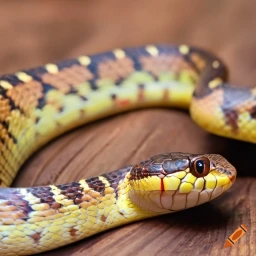 Created by Linda Velwest with https://www.craiyon.com/
Created by Linda Velwest with https://www.craiyon.com/King
They should have at least a 20-gallon tank, but larger king snakes should have at least a 40-gallon tank. The lid should be secure. They should be housed alone because they will eat each other if kept in the same cage. They need logs or branches to climb on, rocks to bask on, and something to rub up against when shedding. UV lighting on a schedule helps them to regulate their sleep/wake cycle and activity level.
Milk
They should have a 20-40 gallon tank with a tightly fitted screen top. Paper bedding or aspen shavings should be used on the ground, with rocks and branches to climb on. UV light will help regulate their activity and sleep cycle. They are better off living alone.
Rat
A 30-40 gallon tank would be great for a tat snake and they would appreciate a tall cage. You can use lights to help them regulate their activity level. Solid, paper, and reptile carpet are good for the bottom of the cage.
Diet
Corn
Thawed frozen rodents about the width of their body at the largest part given once a week or once every other week. Live prey will probably hurt your corn snake.
Garter
Small fish, worms, or slugs are popular food choices. They might also eat small frogs or rodents. They need to eat often for snakes - a few times a week.
Gopher
Gopher snakes have a tendency to overeat. Just give them food once a week. The prey should be about the size of the widest part of the snake's body. Most gopher snakes are fine with eating frozen thawed prey.
They should have clean nonchlorinated water in a shallow dish that they can curl up into if they desire.
Hognose
Hognose snakes like to eat frogs. They will also eat small rodents, salamanders, insects such as crickets, and birds. Their food does not have to be live. Grown snakes will eat about once a week.
King
Warmed frozen rodents are the best food for king snakes. Live prey could injure your snake. Always give them fresh water in a bowl they can bathe in if they want to.
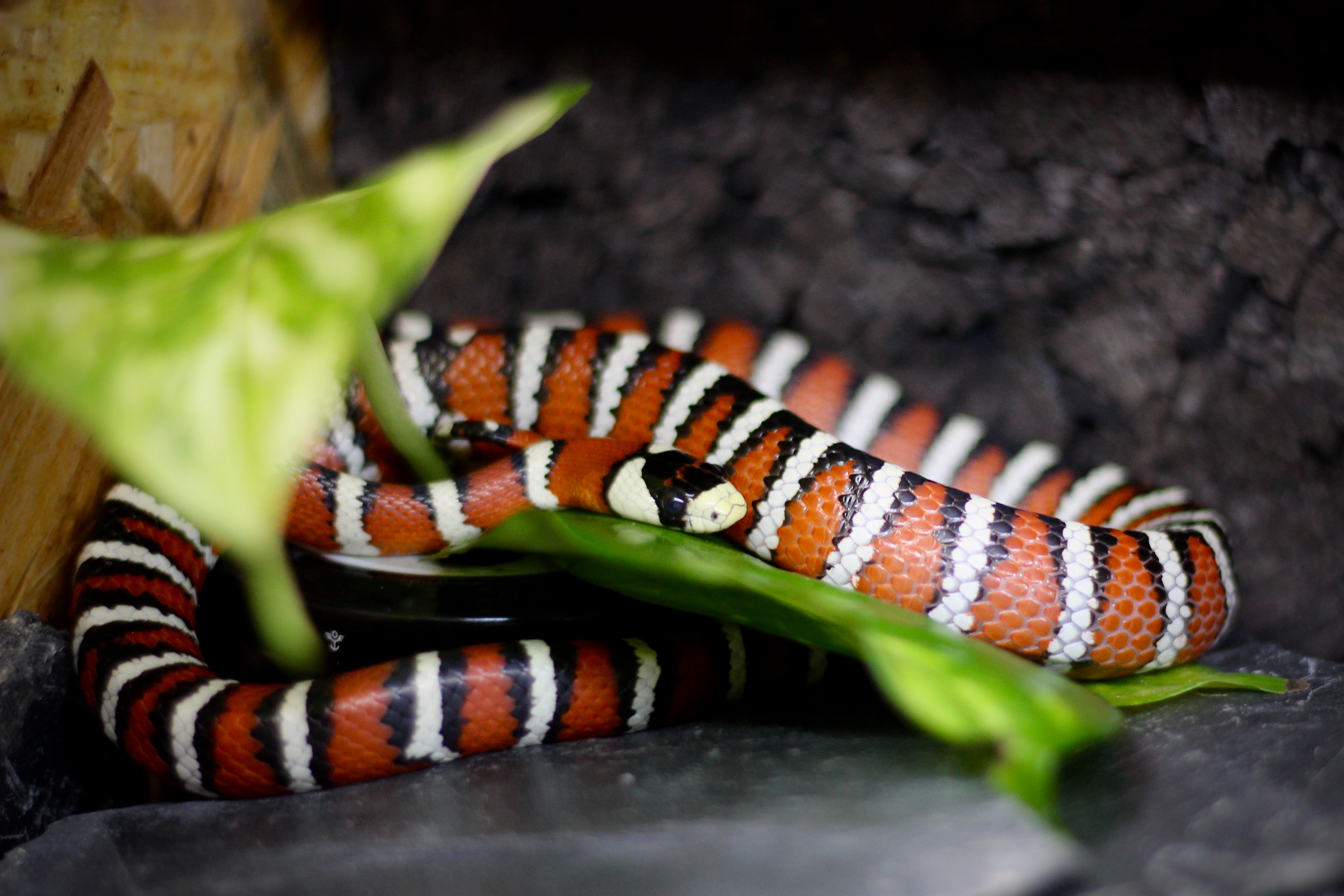 Photo by Thomas Evans https://unsplash.com/photos/red-white-and-black-snake-v-BtysLYOMo
Photo by Thomas Evans https://unsplash.com/photos/red-white-and-black-snake-v-BtysLYOMoMilk
Frozen rodents are their best food. They eat every 5-7 days. They should have water at all times.
Rat
Frozen and thawed rodents are the best food for a milk snake. They eat once a week, more or less. They should have a water bowl they can drink from and lounge in.
Lifespan and Health
Corn
Up to 20 years or more with proper care. Like all reptiles, corn snakes might get dental problems, mouth rot, and respiratory problems.
Garter
They will live up to 10 years in captivity. Health problems you might see in a garter snake include parasites, mites Vitamin B1 deficiency, a skin problem called blister disease, and difficulty shedding.
Gopher
Gopher snake pets usually live about 15 years, although some have been known to live twice that long. They have similar health problems as the other snakes.
Hognose
18 - 30 years.
King
Up to 15 or more years.
Milk
They will live up to 15 years, or longer.
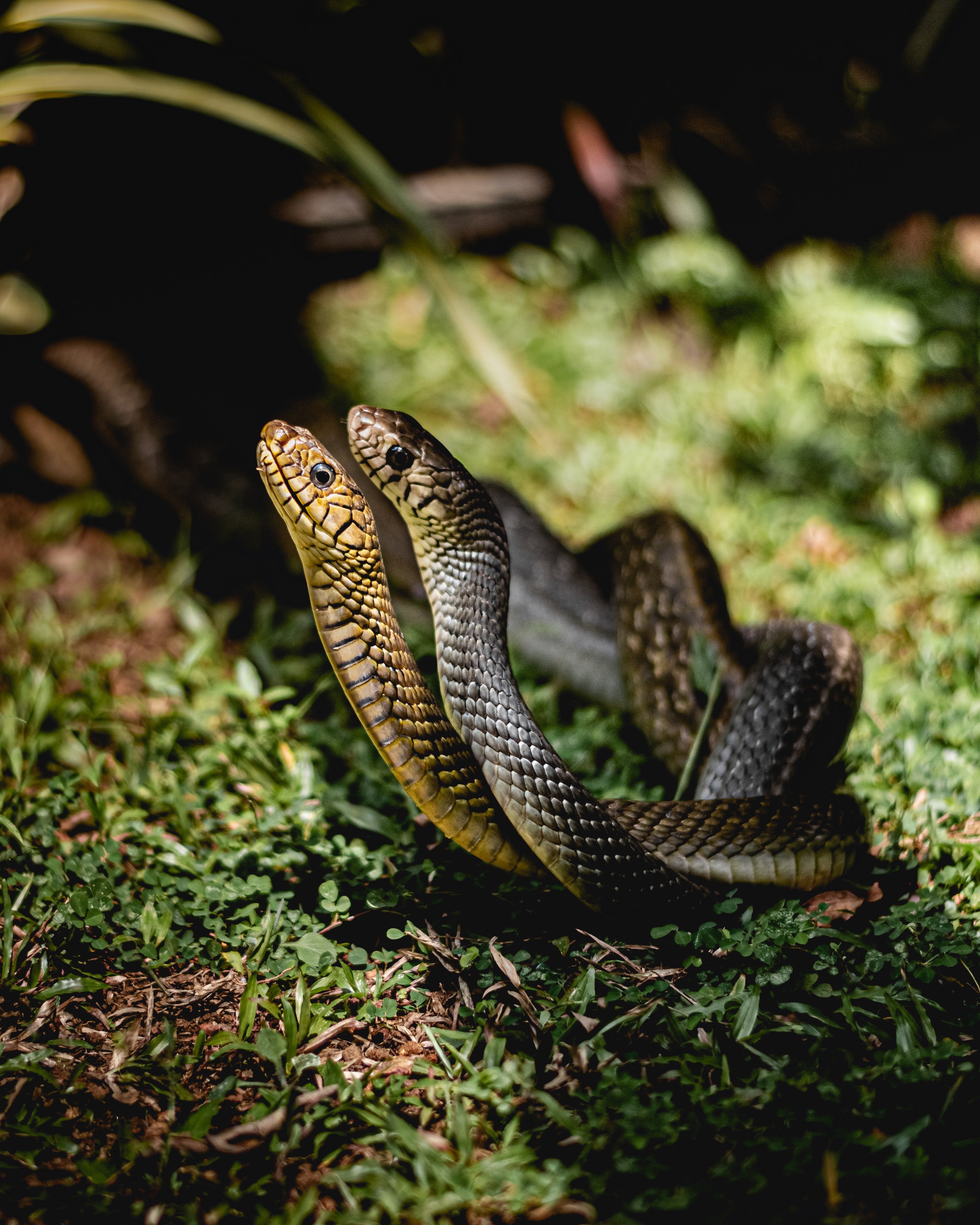 Photo by Sandaru Muthuwadige: https://www.pexels.com/photo/two-rat-snakes-mating-16440022/
Photo by Sandaru Muthuwadige: https://www.pexels.com/photo/two-rat-snakes-mating-16440022/Rat
They usually live 10- 30 years.



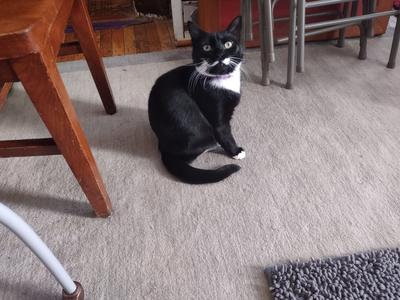


New! Comments
Have your say about what you just read! Leave me a comment in the box below.